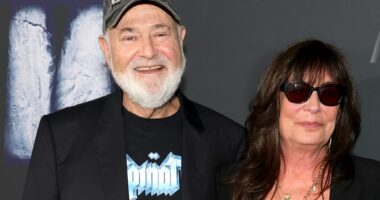Share this @internewscast.com
With a devastating air disaster marking the year 2025 and numerous alarming close calls making headlines, 2025 is emerging as one of the most anxiety-ridden years for air travel since 1999. Back then, travelers were gripped by the fear of the Y2K bug causing potential airborne havoc. In the same year, the only major Hollywood film to spotlight air traffic controllers, Pushing Tin, hit the screens. It offered a fictional glimpse into the intense world of this high-pressure job, showcasing an ensemble of top-tier actors like John Cusack, Billy Bob Thornton, a young Cate Blanchett, and an even younger Angelina Jolie, embodying the personal and professional intrigues of the job. So, how does Pushing Tin hold up 26 years later, with the spotlight brighter than ever on air traffic control?
The film starkly contradicts the notion put forth by some in the presidential administration that air traffic control jobs are occasionally given to unsuitable candidates. Imagine the nightmare of being an incompetent air traffic controller! The idea seems plausible only if the sector were deregulated or privatized. Pushing Tin masterfully illustrates that these occupations are so acutely stressful that achieving a kind of meticulously cool detachment is necessary, though difficult to maintain.
The movie shines brightest when showcasing the rapid-fire confidence and relentless focus needed to excel in such a demanding role, and it brilliantly capitalizes on Cusack’s talent for fast-paced dialogue. This film captures him at his peak, post-Say Anything and on the cusp of reinventing himself in High Fidelity. As Nick, the commanding figure of New York’s air traffic control “tower” (though not literally one, as clarified by the controllers), he orchestrates flights across three airports until the arrival of Russell, an unfaltering and stoic rival played by Billy Bob Thornton, disrupts his rhythm.
At first, this development smartly complicates the Cusack persona, like career highlights High Fidelity and Grosse Pointe Blank. In a supermarket scene where he bumps into Russell’s standoffish young wife Mary (Angelina Jolie), he’s wearing a long coat and making facial expressions that, all together, make him look unnervingly like Lloyd Dobler, to more insidious ends: He’s laying on the sensitive-guy charm trying to win Mary over, talking about what an easy cry he is and making self-deprecating comments, weaponizing his boyishness to prove to himself that he can compete with Russell. Jolie gets a classic neo-screwball line aimed at Cusack after their characters do ill-advisedly sleep together: “What are the fewest number of words you can use to get out that door?”
That takes us through about the first 40, 50 minutes of Pushing Tin, at which point it becomes clear that screenwriters Glen and Les Charles (co-creators of Cheers) are stretching a sitcom plot development thin. The lead character getting shaken by the emergence of a comically calm and “cool” new rival who beats him at his own game before he learns to chill is a sturdy plot for a 24-minute episode, but serves to yank Pushing Tin out of the control room and into the world of generic male one-upmanship. Worse, it marginalizes both Mary and Nick’s wife Connie (Cate Blanchett, really Doing the Accent) as pawns in the men’s game, which keeps Thornton’s character so opaque and mysterious that it’s really just Nick’s breakdown. How the two women actually feel about their respective husbands’ job (or even their flaws as people) becomes weirdly immaterial. The movie gets some mojo back in a later scene where Cusack and Thornton are alone running the tower during a bomb threat, fitting insults and recriminations in the tiny spaces between their torrents of flight-plan instructions, but the eventual self-help-y resolution is embarrassing. Respect to a movie rooted enough in the suburbs of New York City to have not one but two crucial scenes set in a local Italian joint, but also, that’s a lot of time to spend in an Italian restaurant for a movie that’s about air-traffic controllers.
Still, you can feel the touch of a strong studio hand like Mike Newell (Four Weddings and a Funeral; Donnie Brasco; one of the better Harry Potter movies; range!) in the very fact that this is a Fox movie about married adults with high-pressure but unglamorous jobs with four big-name stars, rather than an eight-episode single-season Hulu series you’ve never heard of. Does the lack of big-studio adult dramas (some of which flop, like this one did back in ’99) contribute, in its own way, to the decay of United States infrastructure?! Who can say? But it sure feels notable that this half-good, half-annoying movie — one that, it bears mentioning, gave us the extremely memorable (albeit short-lived) marriage between Billy Bob and Jolie —feels more curious about what this job entails than any of the DEI-blaming members of the current administration.
Jesse Hassenger (@rockmarooned) is a writer living in Brooklyn podcasting at www.sportsalcohol.com. He’s a regular contributor to The A.V. Club, Polygon, and The Week, among others.








